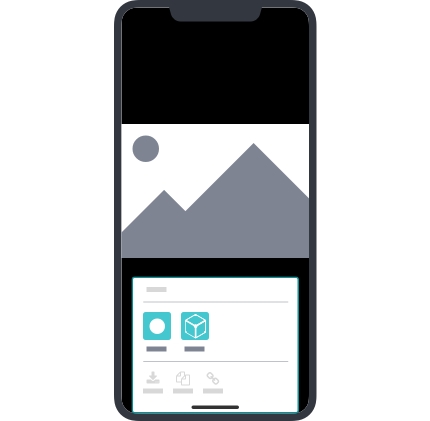Be seamless
The user shouldn't necessarily know how they're connected, whether through wifi, bluetooth or otherwise. They should just feel confident that data is getting sent and received, not how.
What we learned in the research
P2P is understood by users as a concept relatively easily
Users are not concerned are not with the type of connection but that it is stable, fast and not expensive
Users prefer using integrated share functionality from other apps they use such as for photos
Cloud services like Dropbox and AirDrop are considered very easy to use and intuitive for file sharing by many users
Users might know of P2P but don't feel they need to be aware they are using it
Patterns
Don't require the user to manage their connections
When a user wants to transfer data on mobile, they are doing so because they need to do so then and there. If the app requires they manually change the connection to do so, they will be less likely to use the app.
✅ Do
🚫 Don't
Show data transfer subtly
Require users to switch from one connection type to another
Where possible, utilise the mobile OS to initiate transfer
Require files to be manually transferred to your app
Give the user the option to turn off automatic syncing
Sync without telling the user

Ideally, your app or transfer method should be availble at the OS level, for instance in the menu that appears when sharing a file
Have as few settings as possible
Apps on IPFS should be simple and be able to work for users straight away when opening the app.
✅ Do
🚫 Don't
Provide simple, default settings to enable file and data transfer
Ask the user to understand and manage each transfer settings
Allow the user to set preferences for different types of connections, for instance only on wifi for files of a certain size
Limit what the user is able to do on a certain connection type or bandwidth limit
Allow the user to change settings from default ones later
Require the user to start a node when opening or using the app
Last updated
Was this helpful?